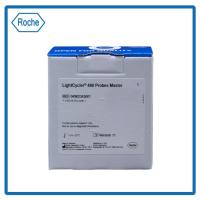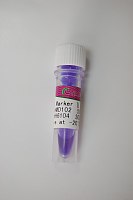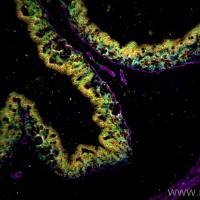Internal Labeling of DNA Probes
互联网
564
One of the most common precursors to undertaking a protocol for mutation detection is the production of a suitably labeled DNA probe (1 ). Labeled nucleotides (radioactive or fluorescent) can be incorporated efficiently into doublestranded DNA by a number of methods. One of the most common is by a process termed nick translation . Nick translation works by using DNase and DNA polymerase I enzymes. DNase cuts one strand of the DNA, exposing 5′-phosphoryl and 3′-hydroxyl (OH) termini. Polymerase I adds dNTPs, including labeled dNTPs to the exposed 3′-OH strand, and at the same time, the polymerase exonuclease activity digests from the exposed 5′ end. In this way, a new complementary strand, including labeled dNTPs, is produced (2 ). It is also possible to incorporate radioactive nucleotides into a DNA using a enzymatic primer extension technique, usually termed random primer labeling (3 ). In this method, random hexanucleotides are annealed to denatured DNA to be used as the probe. These are used as a primer for enzymatic extension in the presence of the four deoxyribonucleotides, one of which is radiolabeled. Alternative probes may be prepared where the label occurs on one of the termini of the DNA, either the 3′ or the 5′ end. The protocol for this type of labeling is found in Chapter 3 .









